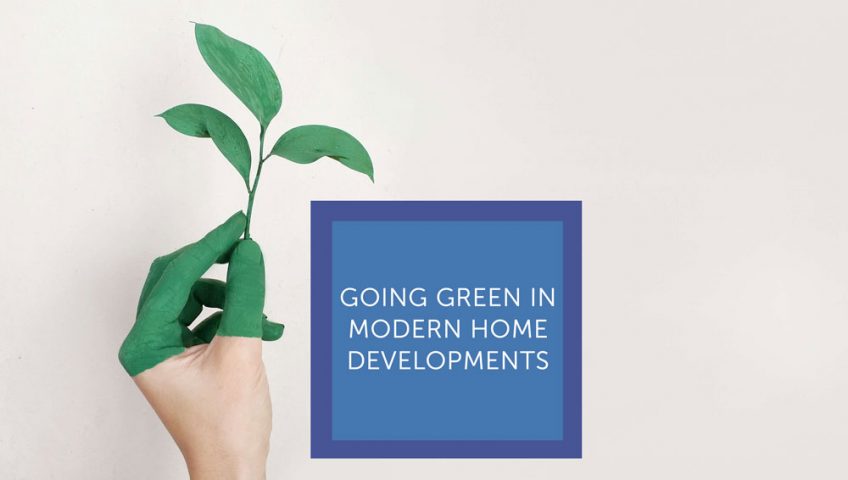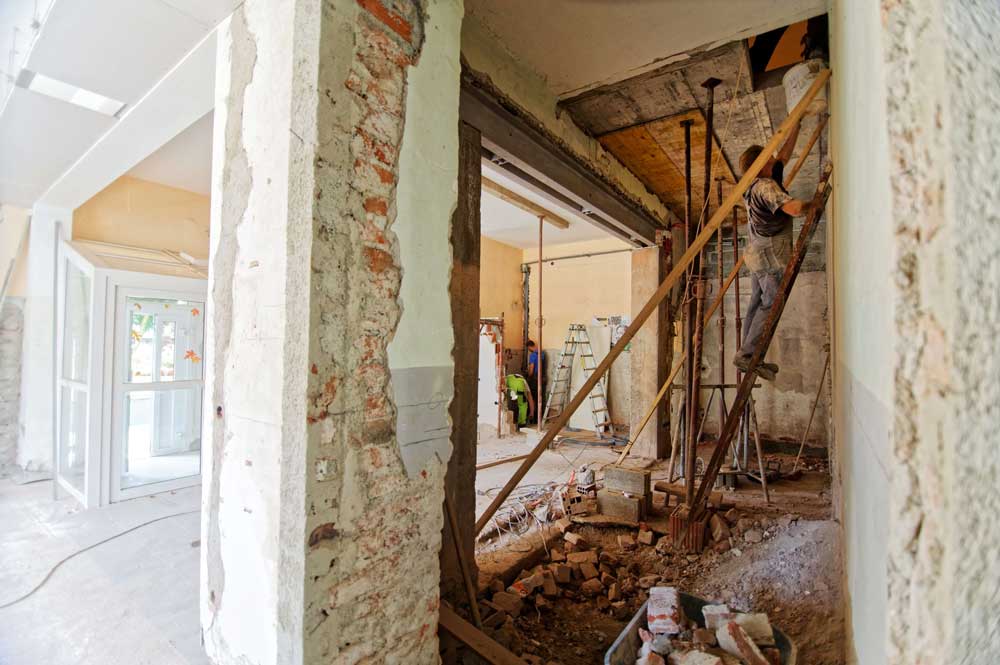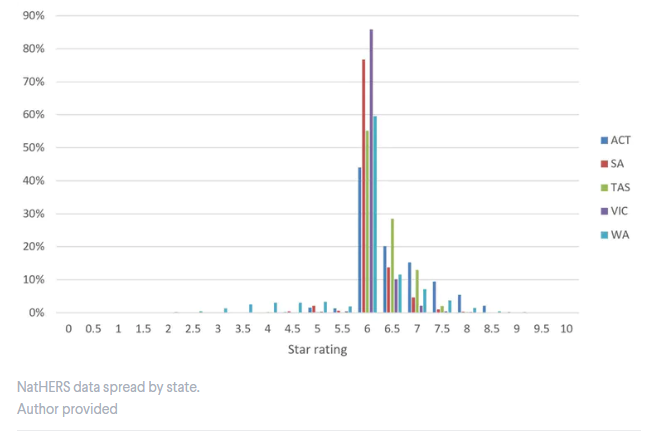Going Green In Modern Home Developments

The property sector accounts for roughly 25% of Australia’s greenhouse gas emissions, and we are constantly engaged in looking at ways to reduce this for a brighter future. For a number of years, the Australian building industry has supported sustainability by introducing new materials and practises to help households reduce their emissions, either in modern home developments, new builds or existing properties.
When it comes to greenhouse emissions and the ongoing battle to reduce global warming, we all recognise the need to do our bit – and it can all start in our homes. Taking a look at the latest figures within the property industry, it’s clear we still have some way to go.
Room For Improvement
In a recent Domain study conducted in June 2019, it was revealed that four out of five new builds in Australia are only being constructed to minimum energy performance requirements, otherwise known as a 6-star rating under the Nationwide House Energy Rating Scheme (NatHERS).
Clearly there are opportunities for improvements within the property sector, with 6-star ratings only producing an average level of thermal performance and efficiency. As shown in the graph below, a majority of Australian homes are just meeting the current minimum energy rating, with just 1.5% of homes designed to 7.5 stars or beyond.
According to Davina Rooney (Chief Executive at the Green Building Council of Australia), home buyers are increasingly focused on the importance of energy efficiency, both in terms of doing their bit for the environment, as well as the financial benefits. With small changes to home designs, materials and home usage behaviours, a slight shift could make a huge difference to cost savings.
Ms Rooney pointed out that the option of going green makes sense when looking at how savings will positively impact mortgage repayments by explaining,
“Ultimately with so many decisions at play when buying a home, making sure the budget stacks up is all important. Clearly linking a lower monthly or fortnightly mortgage repayment … makes this decision easy.”
Source: Domain
Shifting Towards A Greener Future
Dr Trivess Moor (Senior Lecturer at RMIT) commented on the economical impact of improvements by stating,
“In Melbourne, moving from six-star to seven-star would equate to a 27 per cent reduction in heating and cooling energy.”
This indicates a drastic shift in potential savings if we can move the needle on home energy efficiency.
The ongoing introduction of new materials, processes and building techniques have certainly contributed to a growing understanding and consideration of improving home energy efficiency throughout the Australia marketplace.
However, there are now financial incentives being offered to further champion the cause.
Financial Incentives To Promote Change
This week it was announced that the Clean Energy Finance Corporation (CEFC) had teamed up with Bank Australia to launch the very first “green home loan” program for properties valued below $1.5 million Australian dollars.
Known officially as the Bank Australia Clean Energy Home Loan, borrowers will now be able to acquire a discounted home loan if their property is classified as a 7-star rated property (or higher) based on the Nationwide House Energy Rating Scheme (NatHERS).
“Our mission is to have an influence on the broader economy … we see [green home loans] as a valuable tool to influence quality efficiency design over time as an asset.” – Richard Lovell (Executive Director at CEFC).
It is the first time a scheme like this has been offered, helping to provide financial incentives to properties which exceed the National Construction Codes, helping to promote a greener future for generations to come.
Whilst the scheme is initially seen for properties ranging from modern home developments to new residential builds, there are future plans to extend the loan benefits to existing homes to finance improvements such as energy storage systems, solar hot water and energy efficient heating/cooling.

Reasons To Go Green
Climate change and greenhouse emissions are now part of our daily consideration in everything we do. Homeowners, builders and developers are increasingly looking to follow best practise with energy efficiency across modern home developments, new builds and renovation projects. We recognise the clear need to switch to a more renewable and sustainable way of life, with environmental, economic and social motivations all contributing to a greener future.
Eco-friendly homes require far less energy when heating and cooling, making them much cheaper to run, with less wear and tear on heating appliances. An additional by-product of introducing energy efficient features throughout the house is that it can also increase the resale value of your property.
Going green is ultimately helping to reduce our carbon footprint on the environment, further contributing to Australia’s shift towards sustainability, with potentially huge boosts to the Australian economy.
And you can be a part of it by making small changes to energy usage at home.
Prioritising Energy Efficiency in our Modern Home Developments
Nexus Home Improvements are constantly looking at ways to introduce energy efficiency into our home renovations, second story additions and luxury home builds, helping to contribute to Australia’s growing sustainability. We have access to the latest building materials and best practise techniques for optimising energy usage around the home, with our customers enjoying the associated benefits of lower electricity bills and reduced carbon footprints.
We recognise the importance in helping Australia progress into a new chapter of sustainable building techniques and take pride in introducing our customers to greener alternatives. Projects such as our Mount Pleasant luxury home build utilised specific techniques and materials to create a visually stylish aesthetic whilst being energy efficiency.
We introduced energy saving insulation technology (MasterWall), double-glazed windows and exterior facing windows as some examples of techniques used throughout the home. We’ve even used energy efficiency in our recent Nexus HQ office renovation, with open ceilings and large windows projecting natural sunlight down to our offices and meeting rooms.
Go Green On Your Next Project
By introducing smart choices into modern home developments, new builds and renovations, there is huge potential to introduce energy-saving techniques that will save you money, whilst helping the environment. If you’re looking to go green with an upcoming project, we welcome you to contact us to discuss our range of tailored options available to you.


